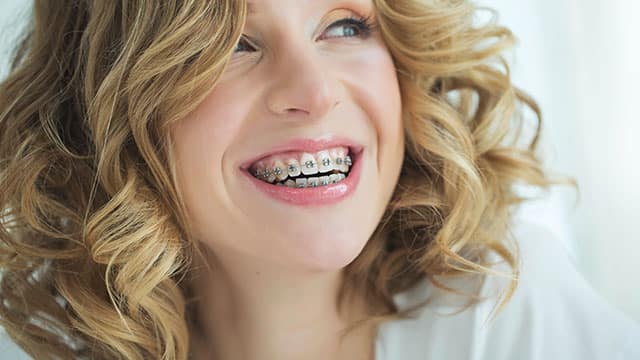Preparing for Braces
Before you get your braces, you'll need to meet with your orthodontist first. That first visit typically consists of:
- Answering questions on your oral and overall health
- Performing a clinical exam
- Taking X-rays
- Getting dental impressions of your teeth for the braces
- Prescribing a treatment plan
Your treatment plan will entail which type of braces are needed, expectations during the procedure, caring for your braces, and an overall timeline.
The Procedure
Everyone's mouth is different, so your braces experience will differ from your brother, sister, or friend. However, a typical procedure for getting traditional braces put on routinely includes the following performed by your orthodontist.
- Cleaning and drying your teeth
- Applying adhesive to teeth to attach the brackets
- Installing the archwires into the brackets
- Then using elastic bands to secure them
Expect 1-2 hours for the procedure. You should also anticipate a level of discomfort and unfamiliarity as your tongue and cheeks will be rubbing against the braces. That sensitivity and soreness should take a week or so to get accustomed to.
Caring for Your Braces
You've got your braces. Now what? Well, you've got to maintain and care for them. What does that mean? It means a few things. First, it's brushing and flossing.
When brushing with braces:
- Rinse with water before you brush to help dislodge any food from the braces
- Brush at a 45° angle at the gumline with a brush made for braces
- Then brush on top of the brackets going down
- Follow that by brushing the bottom bracket and wire going up
- Get every tooth at the gumline, as well as above and below the brackets, to remove all plaque and food debris
When flossing with braces:
- Give a floss threader a try to make it an easier experience
- You could also opt for a water irrigator to aid in rinsing out food particles in between teeth
- After brushing and flossing, rinse with mouthwash to prevent cavities and remove bacteria
Besides oral care, your diet is a significant factor in caring for your braces. What foods you eat and don't eat will greatly impact how clean and effective your braces can be for you. When it comes to food, it's easier to remember what not to consume. That list includes:
- Caramel
- Gummies
- Popcorn
- Nuts
These food types can all get stuck in your braces very easily. It's also smart to avoid high sugar items that can lead to plaque build-up and tooth decay.
That's your quick guide on preparing for braces, procedure expectations, and caring for them. Regular visits to your dentist and orthodontist are a must as well. It's possible a retainer may be necessary after your braces. Either way, your oral health team should be able to address any other questions or concerns you may have. Remember, the more information you have going in, the more prepared you'll be for your braces to give you a happy and healthy smile.
This article is intended to promote understanding of and knowledge about general oral health topics. It is not intended to be a substitute for professional advice, diagnosis or treatment. Always seek the advice of your dentist or other qualified healthcare provider with any questions you may have regarding a medical condition or treatment.
ORAL HEALTH QUIZ
What's behind your smile?
Take our Oral Health assessment to get the most from your oral care routine
ORAL HEALTH QUIZ
What's behind your smile?
Take our Oral Health assessment to get the most from your oral care routine















